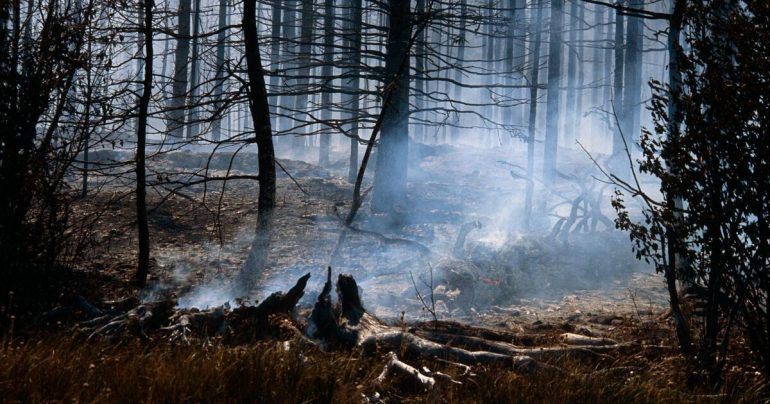Updated 19 May 2021, 8:26 pm
- Forest fires emanate mostly from lightning strikes, cigarette butts or campfires.
- However, some do not require any of these ignition sources.
- They can hibernate in the ground and flare up again.
Wildfires can overwinter as embers in the ground and flare up again next spring – without igniting the fire by lightning strikes or human activities. Occurs in the forests of Alaska and Canada “Zombie wildfire” incident Especially after the scorching heat Forest fire But, in circumstances that have become more frequent as a result of climate change in recent decades
This is what Vriesje Université Amsterdam (Netherlands) magazine led by Rebecca Sholten and Sander Veraverbeke reports in the journal “Nature”. Scientists want to use their findings to detect winter fires first and to be able to fight them more quickly in the future.
Wildfires can overwinter
Northern, boreal forests catch fire every year, destroying vast areas of forest. Mostly they begin with lightning strikes or human activities. In some cases, however, they are generated without one of these triggers – they are leftovers from last year’s fire.
Deep organic soil suitable for smoldering is found in the forests of the north With instant global warming Unusually favorable conditions for such overwintering wildfires, the researchers wrote. “The extent of wintering in boreal forests and the underlying factors influencing this behavior are unclear, however.”
Scientists have now developed a computer model based on reports from fire officials in Alaska Canada, Based on satellite images and other data. This should help detect winter fires and record their extent.
© Carl Churchill, Woodwell Climate Research Center / dpa
“Zombie wildfire” does not require additional source of ignition
Therefore, in order to classify wildfires as “overwintering” two essential criteria must be met: “First, the newly burned areas of winter fires are in the vicinity of the original fire marks and secondly they are considered one. Additional ignition sources are not required and therefore must be done early in the fire season before the main lightning season reappears. ”
Fires and recorded lightning attacks around human settlements were excluded from the analysis.
Researchers investigated 45 small hibernating fires reported by fire managers between 2005 and 2017 in Alaska and the northwestern regions of Canada. He successfully tested his algorithm on nine major fires. Finally, with the help of their computer models, scientists discovered 20 more fires from 2002 to 2018 that matched the criteria.
Global warming affects winter fires
They then analyzed when and where the fire occurred: “We found that the fire survived the winter after the six wettest summers in the northwestern regions; in contrast, no hibernation was observed after the seven wettest summers.”
Groups around Scholten and Veraverbeke were able to derive further criteria for winter from the statistical distribution: the higher the probability, the flatter the area is and the lower it is.
According to the researchers, there will be three main drivers of the winter fire. Directly affected by global warming: Extreme heat temperatures, a large annual spread of forest fires and deep penetration of ground fires.
The study’s authors write, “Rising summer temperatures in relation to global warming may promote the survival of winter fires in the future.”
More methane comes out of the smoldering fire in the ground
From 2002 to 2018, winter fires only burned an average of 0.8 percent of the forest area, but the trend was upward. In 2008, a winter fire in Alaska burned 38 percent of the forest area.
Fire fires in the ground are also harmful to the climate because they release more methane and less carbon dioxide (CO2) than surface fires. Methane is about 28 times more effective as a greenhouse gas than CO2. (FF / DPA)

Introvert. Proud beer specialist. Coffee geek. Typical thinker. Pop culture trailblazer. Music practitioner. Explorer.





